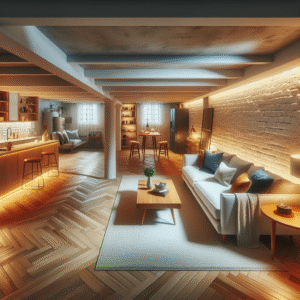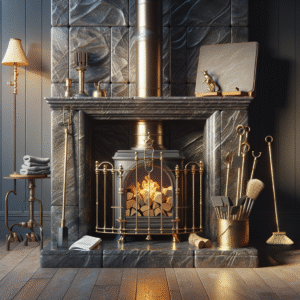Home insulation is a critical component in creating a comfortable, energy-efficient home. It helps regulate temperature, reduces energy costs, and enhances the overall comfort of your living space. With several types of insulation available, each offering different benefits and features, choosing the right one for your home can be overwhelming. In this comprehensive guide, we will explore the various types of home insulation, their advantages, and which type might be best suited for your home.
1. Why Home Insulation Matters
Before diving into the different types of insulation, it’s important to understand why insulation is so vital for your home. Insulation acts as a barrier to heat flow, keeping your home warmer in the winter and cooler in the summer. Without proper insulation, your heating and cooling systems must work harder to maintain a comfortable temperature, leading to higher energy bills and increased wear and tear on your HVAC system.
Insulation also helps with soundproofing by reducing the transmission of noise between rooms and from outside the house. In addition, it can improve indoor air quality by reducing the infiltration of outdoor pollutants and allergens.
The right insulation can make a significant difference in both energy savings and comfort, but with so many options available, it’s essential to choose the right type for your specific needs.
2. Common Types of Home Insulation
There are several types of insulation available, each with its own set of benefits and applications. Understanding the key characteristics of each type will help you make an informed decision for your home.
Fiberglass Insulation
Fiberglass insulation is one of the most common and widely used types of insulation in homes. It is made from fine strands of glass woven together into a wool-like material. Fiberglass insulation comes in two forms: batts and rolls, or loose-fill.
Benefits of Fiberglass Insulation:
- Affordability: Fiberglass is one of the most cost-effective insulation materials on the market, making it a popular choice for homeowners on a budget.
- Fire Resistance: Fiberglass is non-combustible, providing an extra layer of fire protection for your home.
- Easy Installation: Fiberglass batts and rolls are easy to install, especially in standard wall cavities, attics, and floors.
- Energy Efficiency: When properly installed, fiberglass insulation can reduce heat transfer and improve energy efficiency.
Best Applications:
- Walls: Fiberglass batts are ideal for insulating wall cavities in new construction or renovation projects.
- Attics: Loose-fill fiberglass is often used in attics to provide excellent coverage in hard-to-reach areas.
- Floors: It can also be installed under floors to reduce heat loss and improve comfort.
Spray Foam Insulation
Spray foam insulation is a versatile, high-performance insulation material that expands to fill gaps and seal off air leaks. It comes in two varieties: open-cell and closed-cell foam.
Benefits of Spray Foam Insulation:
- Air Sealing: Spray foam creates an airtight seal, reducing air leaks and improving energy efficiency. It is particularly effective at sealing cracks and gaps in attics, walls, and basements.
- Moisture Barrier: Closed-cell spray foam acts as a moisture barrier, preventing water infiltration and reducing the risk of mold and mildew growth.
- High R-Value: Spray foam insulation has a high R-value (a measure of thermal resistance), which provides excellent insulation performance even in small thicknesses.
- Durability: Spray foam is highly durable and can last for decades without degrading.
Best Applications:
- Attics and Crawl Spaces: Spray foam is ideal for sealing attics and crawl spaces where air leaks are common.
- Walls: It can also be used in wall cavities to provide both insulation and air sealing in one application.
- Basements: Closed-cell spray foam is effective in basements to create a moisture barrier and improve insulation.
Cellulose Insulation
Cellulose insulation is an environmentally friendly option made from recycled paper products, primarily newsprint. It is treated with fire-retardant chemicals to improve its safety and performance.
Benefits of Cellulose Insulation:
- Eco-Friendly: Cellulose is made from recycled materials, making it one of the most environmentally sustainable insulation options.
- Air and Sound Barrier: Cellulose is dense and can provide excellent soundproofing as well as insulation against air leaks.
- High Coverage: Loose-fill cellulose can be blown into walls, attics, and floors, ensuring that even hard-to-reach spaces are well-insulated.
- Fire Resistance: Despite being made from paper, cellulose insulation is treated with fire retardants, making it resistant to fire.
Best Applications:
- Attics: Cellulose is commonly used in attics due to its ability to settle into corners and around obstacles.
- Walls: It can be blown into existing walls through small holes, making it a great option for retrofitting older homes.
- Soundproofing: Cellulose insulation is excellent for reducing sound transmission between rooms and floors.
Rigid Foam Board Insulation
Rigid foam board insulation consists of large, flat panels of foam made from materials like polystyrene, polyisocyanurate, or polyurethane. These boards are lightweight, durable, and provide excellent thermal resistance.
Benefits of Rigid Foam Board Insulation:
- High R-Value: Foam boards have a high R-value per inch, making them highly effective in preventing heat loss.
- Moisture Resistance: Rigid foam boards are resistant to water and moisture, making them ideal for use in damp areas like basements.
- Structural Support: In addition to insulation, rigid foam boards can provide extra structural support when installed on exterior walls or foundations.
Best Applications:
- Foundations and Basements: Rigid foam boards are commonly used to insulate foundation walls and basement floors, where moisture is a concern.
- Exterior Walls: Foam boards can be installed on the exterior of walls to improve energy efficiency and provide a continuous insulation layer.
- Roofs: They are also used in roofing systems to provide insulation and prevent heat transfer through the roof.
Mineral Wool Insulation
Mineral wool, also known as rock wool or slag wool, is made from natural stone or industrial byproducts. It comes in batts and loose-fill forms and offers a variety of benefits similar to fiberglass insulation.
Benefits of Mineral Wool Insulation:
- Fire Resistance: Mineral wool is naturally fire-resistant and can withstand extremely high temperatures, making it one of the safest insulation materials for fire-prone areas.
- Soundproofing: Due to its density, mineral wool provides excellent soundproofing and is often used in interior walls and between floors.
- Moisture Resistance: Mineral wool is water-resistant, meaning it won’t retain moisture, which reduces the risk of mold growth.
- Durability: Like fiberglass, mineral wool is highly durable and can last for decades without degrading.
Best Applications:
- Interior Walls: Mineral wool is commonly used in interior walls for both soundproofing and fire protection.
- Basements: It can be used in basements and crawl spaces where moisture resistance is a concern.
- Roofs: Mineral wool is also suitable for use in roofing systems where fire resistance is a priority.
3. Factors to Consider When Choosing Insulation
Now that you’re familiar with the different types of insulation, it’s important to consider several factors when choosing the right insulation for your home. Each home is unique, and the insulation that works best for one property may not be ideal for another.
Climate
The climate in your region plays a significant role in determining the type of insulation you need. Homes in colder climates benefit from insulation with higher R-values to prevent heat loss during the winter. In contrast, homes in hot climates may prioritize insulation that reduces heat gain during the summer months.
R-Value
R-value measures an insulation material’s ability to resist heat flow. The higher the R-value, the better the insulation’s performance. Different parts of your home may require different R-values. For example, attic insulation typically requires a higher R-value than wall insulation due to greater heat loss through the roof.
Cost
Budget is always a consideration when choosing insulation. While spray foam and rigid foam boards offer superior performance, they come at a higher price. Fiberglass and cellulose insulation are more affordable options that still provide excellent energy efficiency.
Ease of Installation
Some insulation materials, like fiberglass batts, are relatively easy to install as a DIY project, while others, like spray foam, require professional installation. Consider whether you want to tackle the installation yourself or hire a contractor, as this can impact the overall cost.
Environmental Impact
If sustainability is a priority, consider eco-friendly insulation materials like cellulose, which is made from recycled materials, or mineral wool, which is made from natural stone. Additionally, many insulation manufacturers now offer products made from recycled or renewable resources.
Moisture Resistance
If you’re insulating areas prone to moisture, such as basements, crawl spaces, or exterior walls, moisture resistance is a key factor. Closed-cell spray foam, rigid foam boards, and mineral wool are excellent choices for these areas because they don’t absorb moisture, reducing the risk of mold growth.
4. The Importance of Proper Insulation Installation
Even the highest-quality insulation won’t perform well if it’s not installed correctly. Proper installation is critical to ensuring that your home remains energy-efficient, comfortable, and protected from the elements.
Common Installation Mistakes:
- Gaps and Voids: Failing to fill gaps or voids in the insulation can lead to air leaks, reducing the insulation’s effectiveness.
- Improper Sealing: Areas around windows, doors, and electrical outlets should be properly sealed to prevent air infiltration.
- Incorrect R-Value: Using insulation with an insufficient R-value for your climate can result in poor performance and higher energy costs.
- Compression: Compressing insulation materials, especially fiberglass batts, can reduce their R-value and effectiveness.
Hiring a professional installer can help ensure that your insulation is properly installed and free from common issues that reduce its performance.
5. Benefits of Proper Home Insulation
Investing in the right insulation for your home offers numerous benefits beyond just energy savings.
Energy Efficiency
Proper insulation reduces heat loss in the winter and heat gain in the summer, leading to lower energy bills and reduced strain on your heating and cooling systems.
Improved Comfort
Insulation helps regulate indoor temperatures, making your home more comfortable year-round. You’ll experience fewer drafts, more consistent temperatures, and improved humidity control.
Soundproofing
In addition to thermal insulation, many insulation materials provide soundproofing benefits, reducing noise from outside and between rooms.
Environmental Impact
Energy-efficient insulation reduces your home’s carbon footprint by lowering energy consumption. Using sustainable materials like cellulose or mineral wool can further reduce environmental impact.
Increased Home Value
A well-insulated home is a desirable feature for potential buyers. Homes with energy-efficient insulation may command a higher price and sell more quickly on the market.
FAQ
1. How often should home insulation be replaced?
Most insulation materials last for decades, but insulation may need to be replaced if it becomes damaged, wet, or compacted. Fiberglass, cellulose, and mineral wool can last 20-30 years, while spray foam insulation can last even longer.
2. Can I install insulation myself?
Some types of insulation, like fiberglass batts and rolls, are suitable for DIY installation. However, spray foam and blown-in insulation are best installed by professionals to ensure proper coverage and performance.
3. How do I know if my home needs more insulation?
Signs that your home may need additional insulation include high energy bills, uneven temperatures, drafts, and frequent use of your heating and cooling systems. A home energy audit can help determine if your insulation is sufficient.
4. What is the most eco-friendly insulation option?
Cellulose insulation is one of the most eco-friendly options because it is made from recycled paper products. Mineral wool, which is made from natural materials, is also considered environmentally friendly.
5. Can insulation improve indoor air quality?
Yes, insulation can improve indoor air quality by reducing air infiltration, which helps prevent outdoor pollutants, allergens, and moisture from entering your home.
Conclusion
Understanding the different types of home insulation and their benefits is essential to making an informed decision for your home. Whether you choose fiberglass, spray foam, cellulose, or another material, proper insulation can enhance energy efficiency, improve comfort, and reduce your environmental impact. With the right insulation in place, you’ll enjoy a more comfortable and cost-effective home for years to come.








